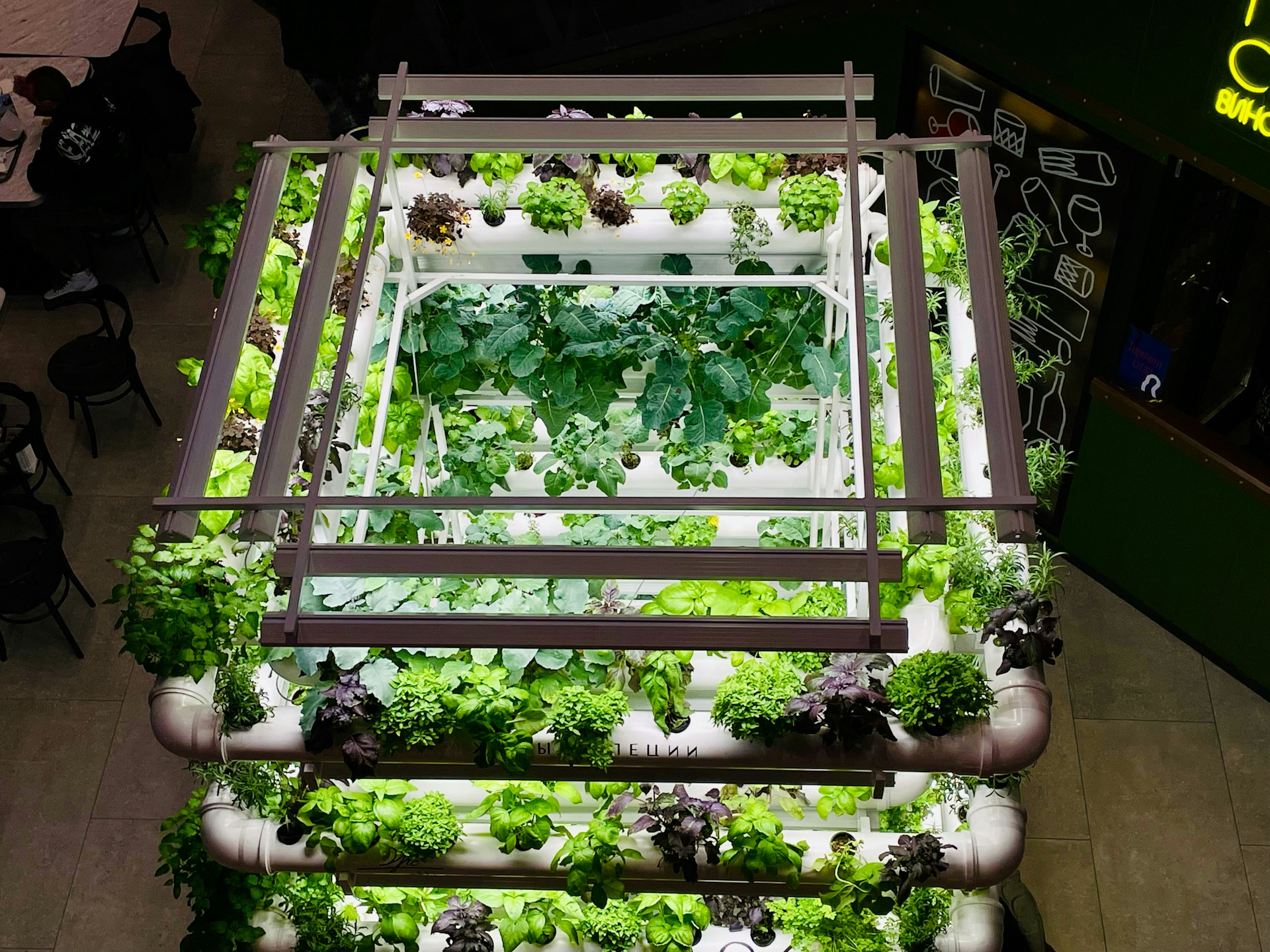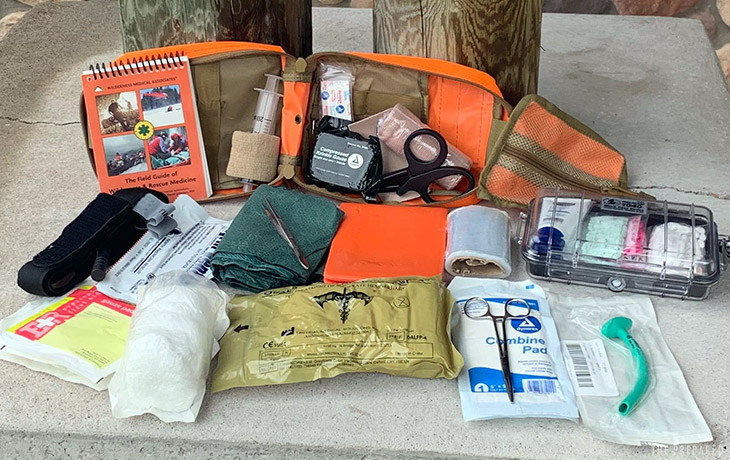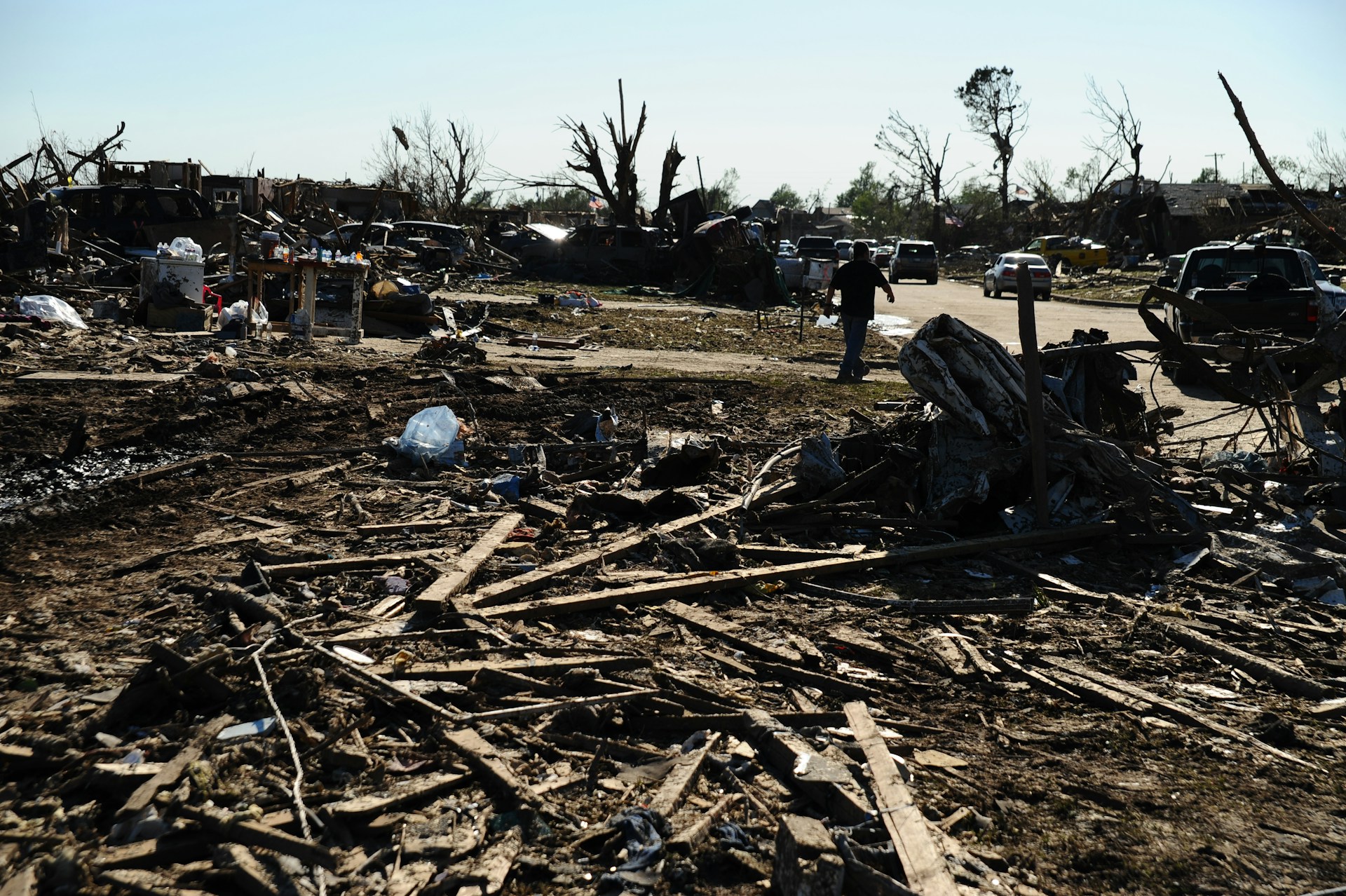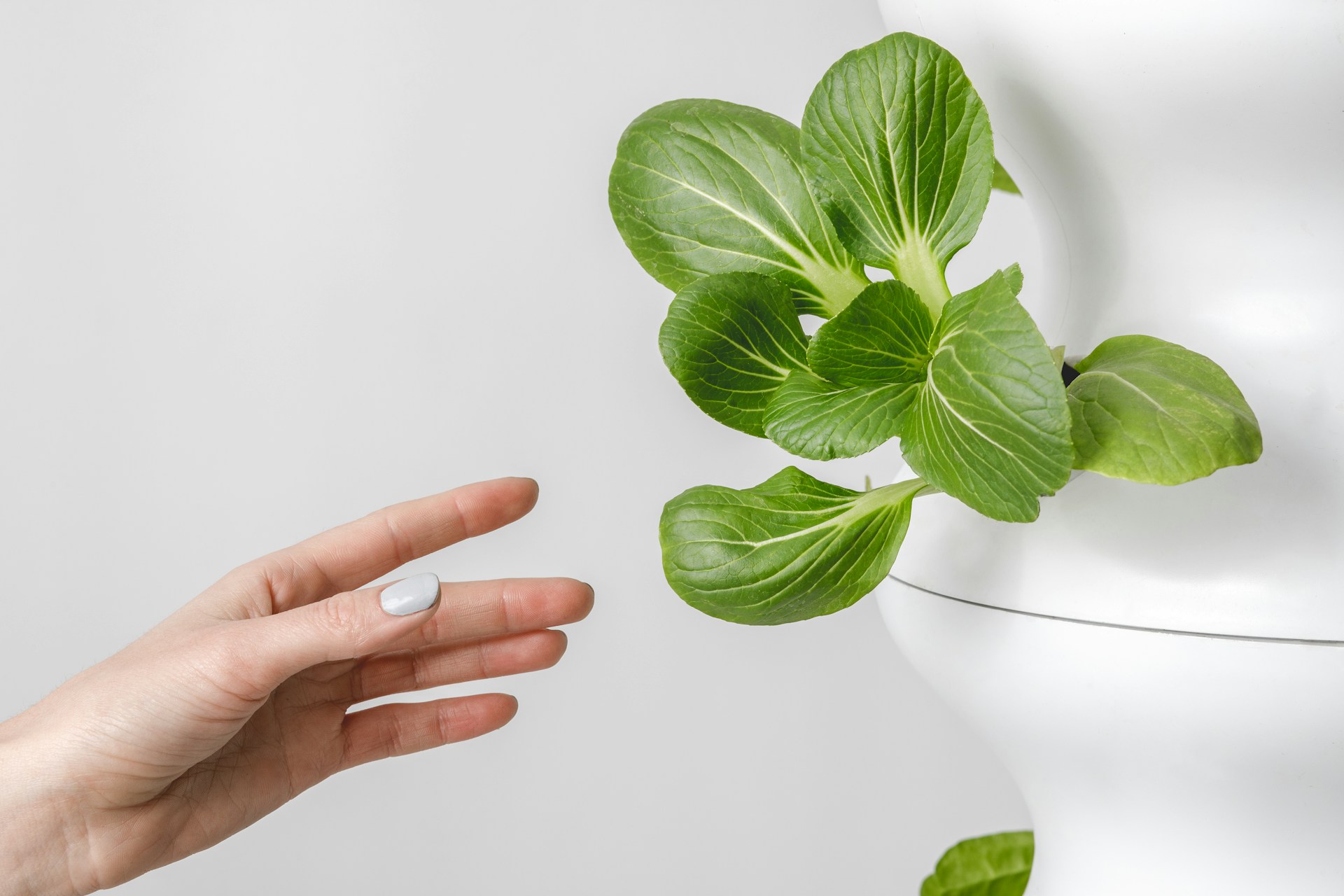Preparedness
Maximize Your Garden Space with Vertical Planting Secrets

Vertical gardening offers a unique solution for those looking to maximize their gardening efforts without expanding their footprint. This method is particularly beneficial for urban homesteaders who often face space constraints.
By utilizing structures such as trellises, garden netting, or pot towers, gardeners can significantly increase their yield in a limited area. This approach not only maximizes space but also reduces the time spent on gardening tasks and enhances plant health.
Certain plants, including pole beans, sweet potatoes, tomatoes, and trailing varieties of cucumber, squash, and melon, thrive when grown vertically. If you’re short on space, it’s worth exploring vertical gardening as an option.
You’ll be surprised at how much can be cultivated vertically. Vertical container gardens on decks or patios allow for an impressive number of plants in a compact area.
One of the advantages of vertical gardening is the ability to utilize otherwise neglected spaces like walls and fences. Containerized, vertically grown plants can be placed almost anywhere, from driveways to balconies and even rooftops.
“Vertical gardening’s simplicity of maintenance is one of its biggest benefits.” By using vertical containers, you can avoid many of the common gardening issues such as weeds, pests, and soil-borne diseases, thus reducing maintenance time and effort.
Plants grown vertically benefit from improved airflow, which reduces the risk of rot. Trellising is particularly effective in promoting plant health by minimizing the spread of soil-borne fungus and disease.
Additionally, vertical gardening offers protection against root-feeding pests. While it won’t eliminate all pests, it does help reduce the presence of soil-dwelling critters.
This method also decreases the time spent on tasks like weeding, fertilizing, spraying, and watering, leading to healthier plants and crops.
For areas with limited sunlight, a garden tower with wheels can be rotated or moved to ensure plants receive adequate light throughout the day. Growing on a trellis can also help plants access more sunlight than they would on the ground.
Vertical gardening allows for a greater variety of plants, especially those that usually require significant ground space, such as pumpkins and cucumbers. Growing these plants upward is an efficient use of space.
Moreover, veggies grown on vertical structures are easier to spot and harvest, which is kinder on your back.
Vertical structures can also serve as a means to create privacy, hide unattractive areas, and establish garden rooms or secret spaces within your yard.
Let us know what you think, please share your thoughts in the comments below.

Preparedness
Essential First Aid Gear Every Prepper Needs

In times of emergency, having the right first aid supplies can be a game-changer, potentially saving lives when professional medical help isn’t available. For preppers, who prioritize self-reliance and preparedness, a well-stocked first aid kit is essential. It ensures that you can manage injuries and illnesses without immediate access to hospitals or medical professionals.
A comprehensive first aid kit should cover basic wound care, essential medications, and tools for assessing and treating medical emergencies. This includes items like gauze pads, bandages, antiseptic ointments, and medical tape. Trauma shears are also crucial for cutting away clothing in emergency situations.
“Customize your kit based on your family’s needs, skill level, and likely risks.” This means considering the specific medical issues you might face based on your environment and personal health conditions. It’s also important to have over-the-counter medications for managing minor illnesses and symptoms when professional care is not an option.
Regularly rotating your stock ensures that medications remain effective and don’t expire. Proper storage is key to maintaining the viability of your supplies. Use waterproof containers and store them in cool, dark places to protect against environmental damage.
In addition to supplies, having the right knowledge and training is crucial. Taking courses offered by organizations like the Red Cross can provide hands-on experience in emergency medical skills, such as CPR and fracture management. “This emergency first aid training prepares you to potentially save lives when professional medical care is not available.”
Reference materials are also invaluable. Books like “Where There Is No Doctor” and “The Survival Medicine Handbook” offer practical advice and should be part of your medical library. These resources can guide you in diagnosing and treating health issues during emergencies.
Hands-on practice is essential for retaining skills. Regularly rehearse emergency techniques to build muscle memory and confidence. This preparation ensures that you can remain calm and effective when real emergencies occur.
Managing your first aid supplies effectively is another critical aspect of preparedness. Keep an up-to-date inventory, check expiration dates, and restock items as needed. Designate a secure storage area in your home, and use clear labeling for quick access during emergencies.
Proper organization of your supplies enhances your ability to respond effectively. Group related items together and clearly label kits based on their intended use. This smart organization allows for efficient response when health issues arise.
Preparedness goes beyond having supplies; it involves continuous education and skill enhancement. Engage with online resources, community groups, and training programs to expand your knowledge and capabilities. “Advancing first aid abilities via continuous education and upgraded gear improves readiness to handle more complex emergency health situations.”
By prioritizing first aid preparedness, you can mitigate reliance on professional healthcare during unstable times. This proactive approach ensures that you are equipped and knowledgeable to handle medical emergencies, potentially saving lives when traditional healthcare is inaccessible.
Let us know what you think, please share your thoughts in the comments below.
Preparedness
Master Scavenging: Essential Skills for Post-Disaster Survival

In the world of survivalism, preparation is key, but even the most seasoned prepper might face situations where scavenging becomes necessary. While you may have stocked up on essentials, unforeseen events could require you to seek additional resources. Many emergency preparedness advisors recommend having enough provisions for 72 hours, yet history has shown that people can be without power or resources for much longer.
In the event of a societal collapse, whether due to a nuclear event, EMP, or a catastrophic natural disaster, scavenging might become a vital skill. It’s essential to distinguish between scavenging and looting. Scavenging involves gathering usable items from discarded or abandoned places, while looting is the act of stealing goods that clearly belong to someone else, often during chaotic situations.
“Looting is something common criminals do without any good reason. Scavenging is what survivors do to ensure they live another day.” Looting often involves taking non-essential items, whereas scavenging focuses on necessities like food and water.
When considering scavenging, focus on survival needs. Evaluate whether you have enough food, a reliable water source, adequate clothing and shelter, communication means, and medical supplies. It’s crucial to think long-term, as the world might not return to normal quickly. For instance, instead of just seeking food, look for resources that can sustain you in the future, like seeds or fishing gear.
Consider your medical needs as well. Even if you have a supply of prescriptions, ask yourself, “What will you do when that one bottle runs out?” Scavenging might become necessary to find the medications you need.
When planning to scavenge, ask yourself these questions: What do you need? What supplies are required long-term? Why do you need these items? Where can you find them? How will you transport and store them?
In extreme situations, such as nuclear disasters, expect the world to be turned upside down. Traditional supply sources like grocery stores or pharmacies may be empty due to early looters, so think creatively about where to find supplies. Follow the path of products from their origin to waste. Farms, food manufacturing plants, and storage units might be more fruitful than depleted stores.
To be successful at scavenging, you need a solid plan. Start by making a list of essential items, prioritizing them based on necessity. Choose areas that are less populated and possibly overlooked by others. Scout the area beforehand to ensure safety and identify potential escape routes.
When collecting goods, ensure you have the means to carry them, such as a tote, bag, or even an abandoned grocery cart. Equip yourself with tools like a box cutter and lock pick to access supplies. Once you’ve gathered items, have a discreet storage plan to keep them safe from others who might be searching for the same resources.
In desperate times, bartering might be necessary. “Barter carefully” to ensure you obtain essential resources without compromising your safety or supplies.
Having a plan is crucial for successful scavenging. In addition to knowing what and where to scavenge, plan how you’ll transport goods back to your base. Tools like a lock pick kit, crowbar, or window breaker can help access buildings, while a flashlight and communication tool are wise additions to your scavenging kit.
Ultimately, while scavenging should only be a last resort, being prepared with a strategic approach can make the difference between mere survival and thriving in a post-disaster world.
Let us know what you think, please share your thoughts in the comments below.
Preparedness
Unlock Faster Plant Growth with Hydroponics

Hydroponic gardening is an innovative method of growing plants without soil, using nutrient-rich water to nourish the roots directly. This approach allows for efficient use of space and resources, making it an attractive option for those interested in year-round indoor gardening.
In hydroponics, plants are grown by placing them in net pots with a growing medium like coconut fiber or clay pebbles. The roots are then exposed to nutrient-rich water, which provides all the necessary nutrients for growth. This method is particularly suitable for growing a variety of plants, including herbs, which can be started as seedlings. To begin, simply clean the roots of a seedling and place it into a net pot, allowing the roots to extend into the water.
One of the major advantages of hydroponic gardening is its efficiency in space utilization. Since the plants do not require large root systems, they can be grown in compact setups like small buckets or water reservoirs. Additionally, without soil, plants receive nutrients directly, which results in faster and better yields. According to Advanced Nutrients, “Most experts agree that plants will grow at least 20% faster with hydroponics vs soil,” and “experts also agree you can expect at least 20-25% more yields with hydro as compared to growing in soil.”
Hydroponic systems also offer more control over the growing environment. You can monitor and adjust nutrient levels and other conditions to optimize plant health, all while avoiding the hassle of dealing with weeds.
However, hydroponic gardening does come with its challenges. It requires constant attention, as small mistakes in nutrient balance or pH levels can lead to significant problems. Grow Ace notes, “While a hydroponic system does offer the most control you can get over your plants’ nutrition, it also means you’ve got to keep a closer eye on your plants than with any other growing technique.” Moreover, most systems rely on electricity to run water aerators, which means power outages can jeopardize your garden. Additionally, the initial setup and maintenance can be costly.
There are several types of hydroponic systems to choose from, each with its own benefits and requirements. For beginners, a deep water culture system is often recommended due to its simplicity. In this system, plant roots are submerged in nutrient-rich water, with an air pump providing necessary oxygen.
Other systems include the nutrient film technique, where a thin film of nutrients flows over the roots, and the ebb and flow system, which periodically floods the roots with nutrients. Each system has its own set of requirements and complexities, so it’s important to choose one that aligns with your space and goals.
For those interested in DIY projects, there are numerous guides available online to help you build your own hydroponic system. For instance, a simple water culture system can be set up by filling a reservoir with water and fertilizer, aerating the water with an aquarium bubbler, and using a floating Styrofoam platform to hold the net pots.
Hydroponic gardening offers a modern approach to growing plants, with the potential for faster growth and higher yields. While it requires a bit more attention and investment, the benefits of fresh, home-grown produce year-round can be well worth the effort.
Let us know what you think, please share your thoughts in the comments below.
-

 Tactical1 year ago
Tactical1 year ago70-Year-Old Fends Off Intruder with Lead-Powered Message
-

 Tactical1 year ago
Tactical1 year agoVape Shop Employee Confronts Armed Crooks, Sends Them Running
-

 Preparedness9 months ago
Preparedness9 months agoEx-Ballerina’s Guilty Verdict Sends Tremors Through Gun-Owner Community
-

 Preparedness7 months ago
Preparedness7 months agoGood Samaritan Saves Trooper in Harrowing Interstate Confrontation
-

 Tactical1 year ago
Tactical1 year agoMidnight SUV Theft Interrupted by Armed Homeowner’s Retaliation
-

 Survival Stories2 years ago
Survival Stories2 years agoEmily’s 30-Day Experience of Being Stranded on a Desert Island
-

 Preparedness8 months ago
Preparedness8 months agoArizona Engineer’s Headless Body Found in Desert: Friend Charged
-

 Preparedness7 months ago
Preparedness7 months agoBoy Saves Dad from Bear Attack with One Perfect Shot